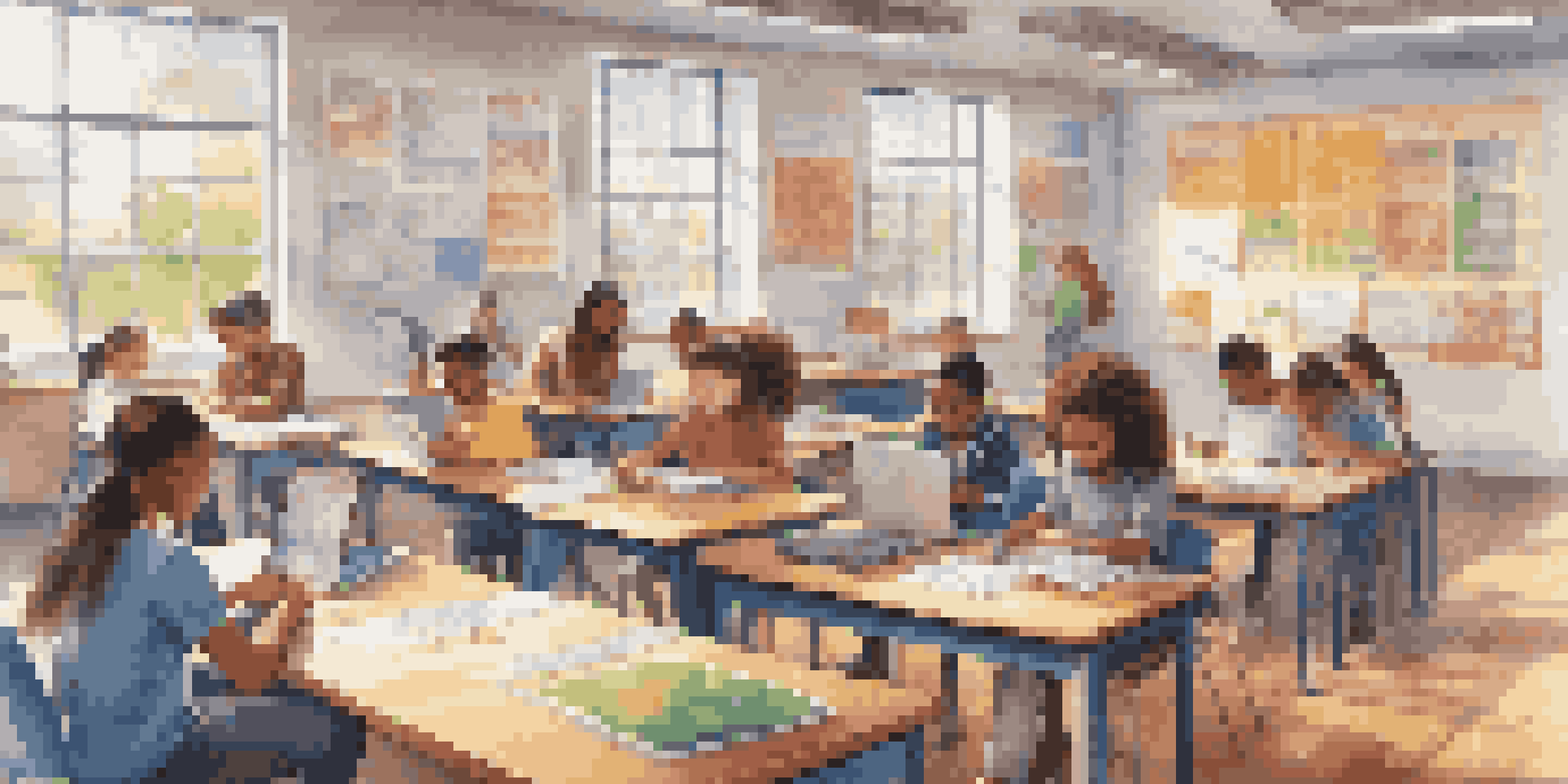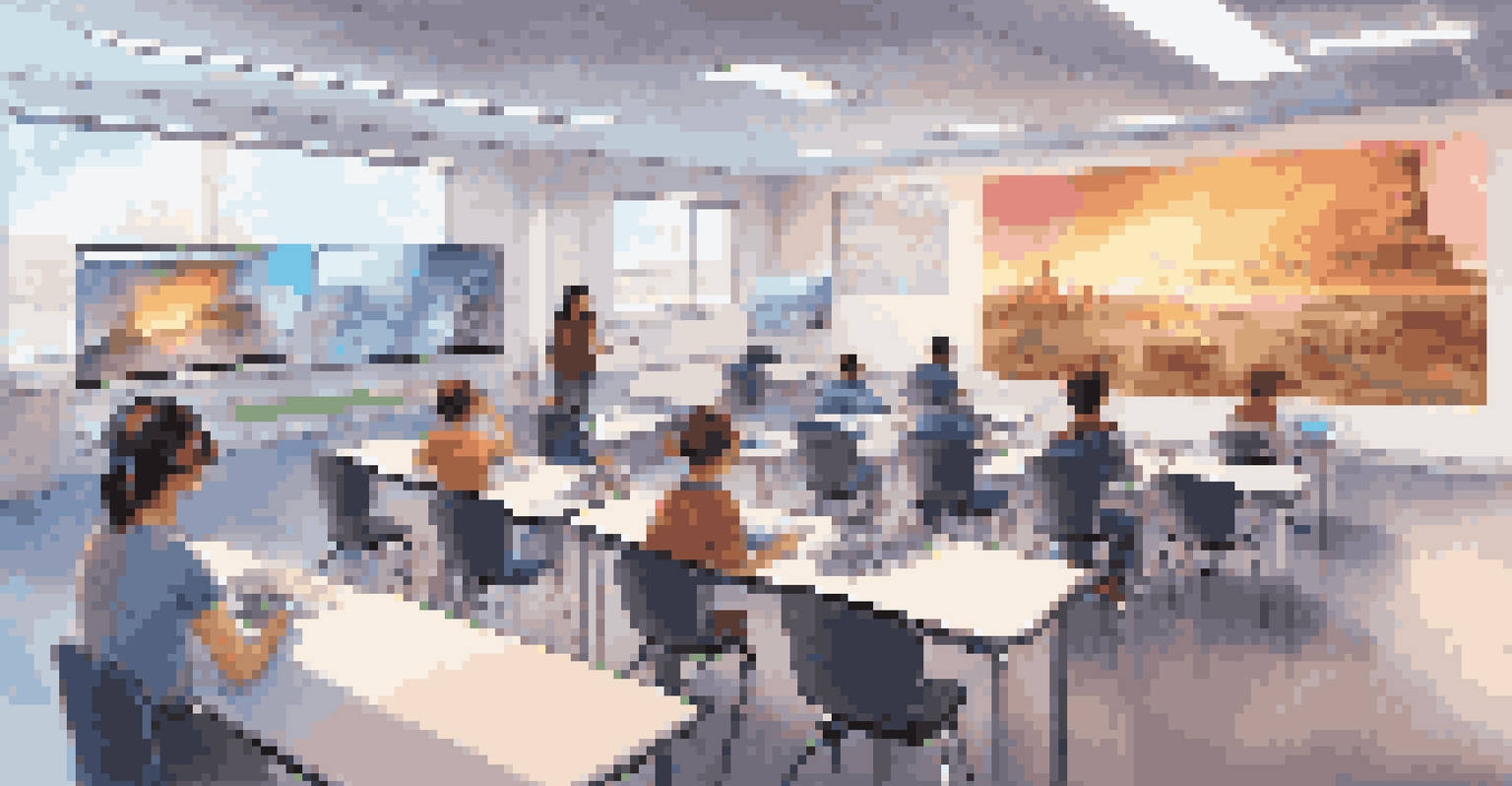Utilizing Open Educational Resources in Blended Learning

Understanding Open Educational Resources (OER)
Open Educational Resources, or OER, are teaching materials that are freely accessible to anyone. These resources can include textbooks, videos, courses, and even software that educators can use to enhance learning. The beauty of OER lies in their open licensing, which allows customization and redistribution, making them a versatile tool for educators.
Education is the most powerful weapon which you can use to change the world.
Imagine OER as a treasure chest filled with learning materials that anyone can explore. This accessibility means that both educators and students can benefit from high-quality content without the burden of expensive textbooks or proprietary software. The collaborative nature of OER encourages sharing and innovation among educators, fostering a community of learning.
In the context of blended learning, OER can provide a rich variety of resources to complement traditional classroom instruction. By integrating these resources, educators can create a more dynamic and engaging learning environment, catering to diverse learning styles and needs.
The Concept of Blended Learning Explained
Blended learning is an educational approach that combines traditional face-to-face instruction with online learning activities. This method allows for a more flexible learning experience, where students can engage with content in a way that suits their individual pace and preferences. It’s like having the best of both worlds – the personal touch of a classroom and the convenience of online resources.

One of the key benefits of blended learning is that it encourages active participation from students. Instead of passively receiving information, students can take charge of their learning journey, accessing materials when and where they need them. This shift not only boosts engagement but also helps develop essential skills such as self-directed learning and time management.
OER Makes Education Accessible
Open Educational Resources provide free, customizable teaching materials that enhance learning opportunities for both educators and students.
Moreover, blended learning can bridge the gap for students who may struggle with traditional methods. By incorporating various OER into the mix, educators can provide diverse perspectives and approaches, ensuring all students have the opportunity to succeed.
Benefits of Using OER in Blended Learning
Integrating OER into blended learning environments offers numerous advantages, the most notable being cost-effectiveness. By utilizing free resources, schools can allocate funds to other essential areas, such as technology or training. This financial flexibility is crucial, especially in institutions with limited budgets.
The great use of a life is to spend it for something that will outlast it.
In addition to saving money, OER promotes educational equity. Students from diverse backgrounds can access the same high-quality materials, leveling the playing field for all learners. This accessibility can lead to improved academic outcomes and a more inclusive learning environment.
OER also fosters a culture of collaboration among educators. By sharing resources and best practices, teachers can enhance their own teaching methods while benefiting from the expertise of others. This collaborative spirit not only enriches the learning experience but also promotes professional growth.
Implementing OER in Blended Learning Models
To effectively implement OER in blended learning, educators should start by identifying their specific learning objectives. This clarity helps in selecting the most appropriate resources that align with the curriculum and student needs. It's akin to choosing the right tools for a DIY project – the right resources can make all the difference in achieving success.
Once the objectives are set, educators can curate a collection of OER that complements their teaching style and engages students. This process may involve reviewing multiple platforms, such as Creative Commons, OER Commons, and other educational repositories. By handpicking resources, educators ensure that they are providing quality content that resonates with their students.
Blended Learning Enhances Engagement
Combining traditional instruction with online resources fosters active participation and allows students to learn at their own pace.
Finally, ongoing assessment and feedback are crucial. Educators should regularly evaluate the effectiveness of the OER being used and make adjustments as necessary. This iterative process not only improves the learning experience but also keeps the content relevant and engaging for students.
Challenges of Utilizing OER in Education
While OER presents many opportunities, there are challenges to consider. One significant hurdle is the quality and reliability of available resources. Not all OER are created equal, and educators must be diligent in evaluating the materials they choose to use. This process can be time-consuming but is crucial for maintaining educational standards.
Another challenge is the potential for technological barriers. Not all students may have equal access to the internet or devices needed to engage with OER effectively. Educators must be mindful of these disparities and consider hybrid solutions that ensure all students can participate.
Lastly, training and support for educators in utilizing OER can be lacking. Professional development opportunities are essential for teachers to become comfortable with these resources and integrate them into their teaching effectively. By investing in training, schools can empower educators to make the most of OER in their blended learning models.
Future Trends in OER and Blended Learning
The landscape of education is continuously evolving, and so are Open Educational Resources. With advancements in technology, we can expect to see a surge in interactive and multimedia OER that enhances student engagement. Imagine virtual reality experiences or gamified learning modules that bring subjects to life – the future of OER is bright and innovative.
Moreover, as more institutions recognize the value of OER, collaboration among educators is likely to increase. This collaborative spirit can lead to the development of high-quality resources tailored to specific curricula, ensuring that all students have access to the best materials available.
Collaboration Boosts Teaching Quality
Integrating OER encourages collaboration among educators, leading to improved teaching methods and a richer learning experience.
Finally, the integration of artificial intelligence in educational resources could personalize learning experiences even further. AI-driven tools can analyze student performance and suggest OER that meet their individual needs, making blended learning more effective and tailored.
Conclusion: Embracing OER for Quality Education
In conclusion, utilizing Open Educational Resources in blended learning can transform the educational landscape. By providing accessible and customizable materials, OER empowers both educators and students to engage in a more enriched learning experience. This approach not only promotes equity but also fosters a collaborative learning environment.
As we continue to navigate the challenges and opportunities presented by OER, it’s essential to embrace this powerful tool and advocate for its integration into educational practices. The potential benefits are immense – from improved academic outcomes to enhanced professional development for educators.

Ultimately, the future of education lies in our ability to adapt and innovate. By harnessing the power of OER in blended learning, we can create a more inclusive and effective educational system that meets the needs of every learner.